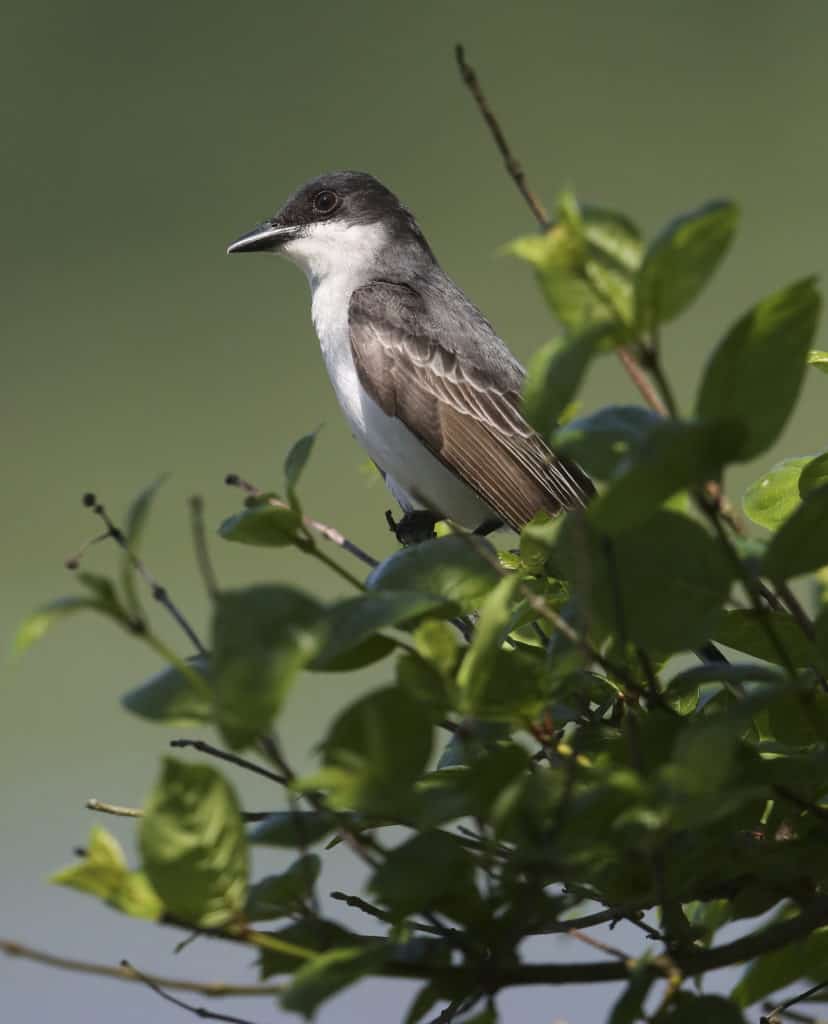Creature Feature

Discarded Fishing Line Is Dangerous for Birds
By Wayne Bierbaum
I recently found an empty nest along the edge of the Patuxent River. It was literally hanging over the water and was made of string, fishing line and vines. It looked pretty well-woven but the fishing line could be a hazard for the young birds. Nearby were the likely nest builders, eastern kingbirds. They were loudly complaining to each other about something that I couldn’t see.
Later at another site, Audrey Carroll Audubon Sanctuary in Mt. Airy, I witnessed two kingbirds attack a Cooper’s hawk that was circling overhead. It appeared that the hawk lost a tail feather in that altercation.
Eastern kingbirds are a blue jay-sized, dark-backed bird with a white dipped tail and a white chest. They have a large black bill. The birds are frequently found sitting up tall and out in the open and are easy to identify. They have a raspy high-pitched voice that is not pleasant.
The eastern kingbird is part of a family called tyrant flycatchers with 37 species; there are nine species of kingbirds. As a flycatcher, they spend most of their feeding effort catching flying insects but they also catch insects on the ground.
Families of kingbirds will migrate together in the fall. When they return in the spring, they tend to nest at the edge of water, rivers and ponds. Trash items are frequently incorporated into nests. Fishing line is a danger to the birds as they will weave it into a nest and it can entangle family members. Please discard your fishing line in a proper manner.
Occasionally, the beautiful and elegant scissor-tailed flycatcher comes to our area. They have a tail that is one and a half times their body and a lovely reddish orange chest. They are usually found in the Midwest. I saw several while on a trip to the Austin, Texas area.
As a follow-up to last week’s story about hognose snakes. They are sought after as pets but collecting wild animals, including snakes and turtles, is illegal in Maryland. Some certified captive bred animals can be kept as pets.
If you find an injured or abandoned anima, please contact DNR’s Wildlife Services (1-877-463-6497) or contact a licensed wildlife rehabilitator before attempting to handle the animal. They will give you the best advice on what to do and what not to do if you attempt rescue. NOTE: An unlicensed citizen may NOT attempt to rehabilitate an animal on their own.
